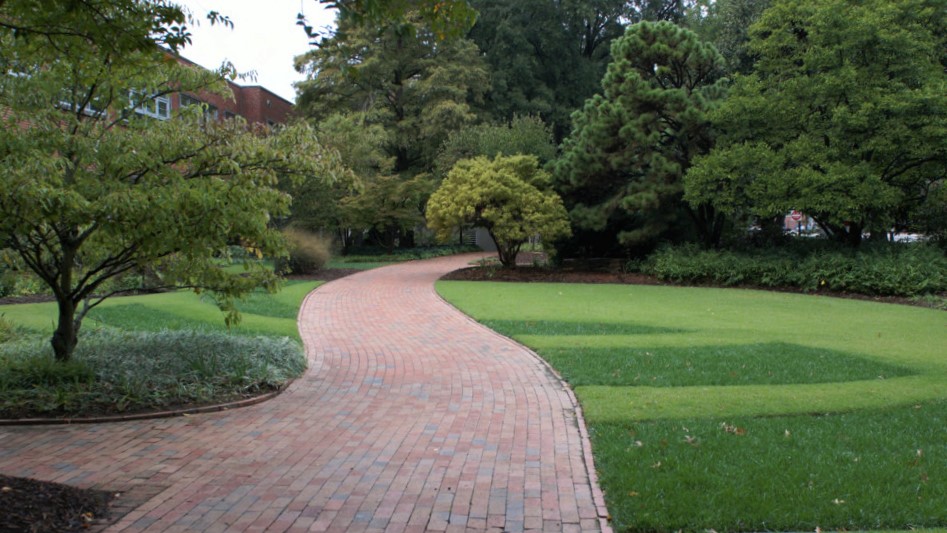
Kilgore Hall walkway, photograph by Ed Funkhouser
This blog post contributed by Alanna Natanson.
With the campus in full bloom and the daylight lasting longer, there is perhaps no better time to take a walking tour around NC State's campus or Raleigh. The Special Collections Research Center (SCRC) has played an important part in several self-guided historical walking tours, providing artifacts and staff knowledge to bring the university’s history to life in the places where it happened.
Here we offer several walking tour resources you can use while you’re out on a jaunt. Or, if the heat and pollen are too oppressive, visit the resources from the comfort of your own home or the air-conditioned SCRC!
For a twentieth-century walking tour
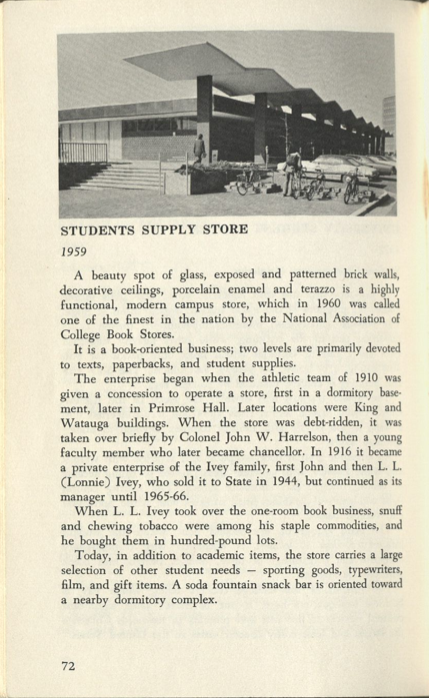
Marguerite Schumann’s Strolling at State: A Walking Guide to North Carolina State University is one of the earliest-known walking guides of NC State. The book, which is available in the Hill Library reference section and in SCRC holdings, includes historical anecdotes about campus buildings and their namesakes. Strolling at State is also an artifact of history itself; because it was written in 1973, the book—not to mention drafts and correspondence about it available in the University Archives—lets us see what stories people told about NC State nearly 50 years ago.
University Archivist Maurice Toler led a campus tour in 1994 that also focused on the namesakes for buildings and the school’s early history. His campus tour script is available in the University Archives, so you can peruse it by booking an appointment at the SCRC.
For a focus on space and race
The Red, White & Black walking tours, which NC State’s African American Culture Center, the Libraries, and the Department of History jointly organized from 2011 to 2016, added a new layer to the earlier walking tours by commemorating the accomplishments and struggles of African American campus community members. Today, you can still experience the Red, White & Black tour thanks to the Libraries’ mobile tour. As a bonus, it includes more photographs from Special Collections. You can also watch Ms. Toni Harris Thorpe, one of the tours’ original creators, blend her deep knowledge of campus with archival evidence to recreate some of the tour stops in this recorded presentation.
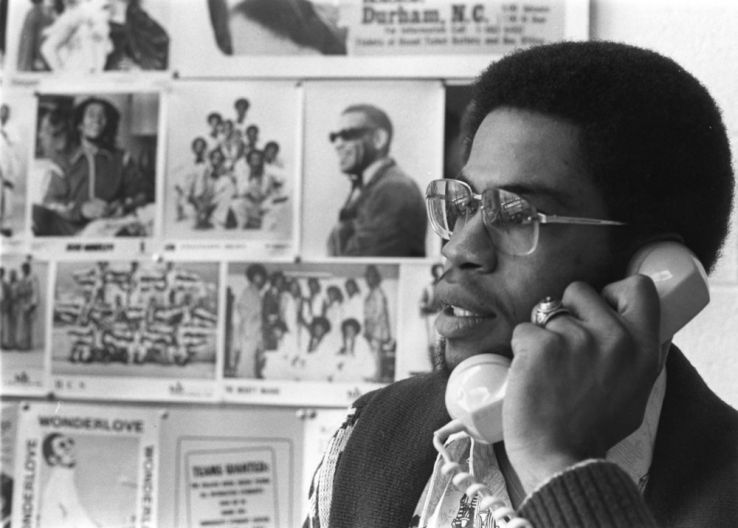
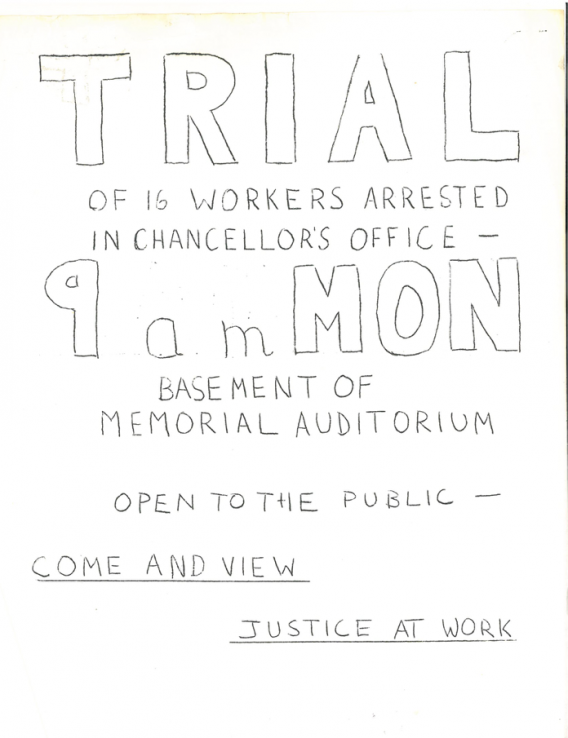
You can also explore spots significant to the story of integration at NC State through the map "Race & Space" on the digital history website The State of History. Students from the Department of History document the “spatial negotiations” that slowly led to NC State’s de facto integration across the 1960s, 1970s, and 1980s.
As you explore each stop on their map, dive into the 116 items from Special Collections that the History students shared digitally, including photographs, letters, newspaper clippings, and oral histories. The students working on The State of History collected images digitized by Special Collections, such as this photograph of student leader David Hinton (top right) from around 1970. They also digitized analogue documents themselves, such as this poster supporting African American workers (for more information about the workers and their protest, see the African-American Protests, Spring 1969 blog posts).
Finally, the digital project Brick Layers includes a map that visitors can turn into a walking tour. Filled with photographs, letters, and architectural drawings from the SCRC, Brick Layers highlights how members of historically marginalized communities, such as Asian American people, Latinx people, LGBTQ+ community members, and individuals using wheelchairs in addition to African Americans, each made NC State University a better place.
For a focus on buildings themselves
Twelve buildings on campus were built or enhanced by Americans suffering unemployment during the Great Depression. Walk to all the spots, including Memorial Belltower, Clark Dining Hall, and the NC State Milking Parlor, using the digital history map Living New Deal. Read entries by University Archivist Todd Kosmerick about campus buildings that President Franklin Roosevelt’s New Deal initiative paid unemployed workers to construct or enhance. Then, browse the images attached to each entry, digitized from the University Archives Photograph Collection.
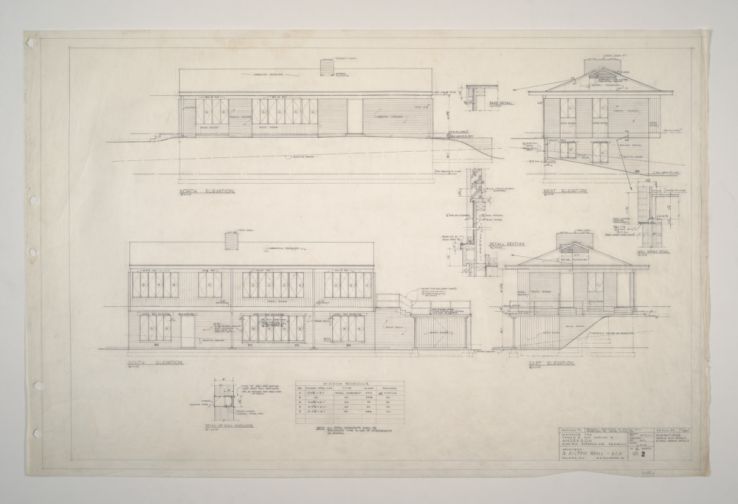
For an off-campus architectural adventure, take the Mid Century Modern Home Architecture walking tour curated by Special Collections Librarian Phillip MacDonald. Special Collections holds original architectural drawings, photographs, or oral histories for each of the stops, which MacDonald highlighted in a blog post for Special Collections.
Compare the spots to examples of modernist architecture all over the world as documented in the Mapping Visualization of Modernist Architecture Collections created by Special Collections Graduate Extension Assistant Shima Hosseininasab. Is it too hot outside for a walk? Instead, have your avatar stroll through the virtual reality exhibit that MacDonald spearheaded, Modern Raleigh: An Architecture Exhibit (a video walkthrough of the exhibit is available here).
If you have any questions or are interested in viewing Special Collections materials, please contact us at library_specialcollections@ncsu.edu or submit a request online. The Special Collections Research Center is open by appointment only. Appointments are available Monday–Friday, 9:00 a.m.–6:00 p.m and Saturday, 1:00 p.m.–5:00 p.m. Requests for a Saturday appointment must be received no later than Tuesday of the same week.